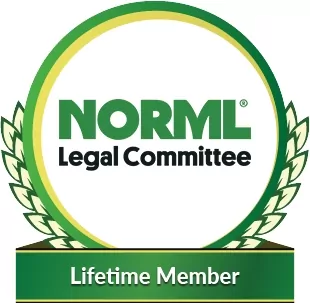CAFRA
What are the procedural requirements of a civil forfeiture action? Most federal civil asset forfeiture cases are governed by the Civil Asset Forfeiture Reform Act (“CAFRA”) of 2000, Pub.L. No. 106-185, 114 Stat. 202. CAFRA is codified principally at 18 U.S.C. 983 and the Supplemental Rules for Admiralty or Maritime Claims and Asset Forfeiture Actions.
CAFRA amended the seizure and forfeiture of property used to facilitate criminal activity by the federal government.
Under CAFRA, the federal seizing agency is permitted to administratively forfeit assets valued at or less than $500,000, but any seized assets valued at more than $500,000 must be made only upon a judicial decree after judicial forfeiture proceedings as required in 19 U.S.C. §§ 1607, 1610.
Attorney for CAFRA Proceedings in Federal Court
If your property was seized for forfeiture by a federal agency, seek out the services of an experienced criminal asset forfeiture attorney. Our attorneys are experienced in challenging forfeitures under the Civil Asset Forfeiture Reform Act (“CAFRA”) in the United States District Courts.
We represent claimants with standing, including an innocent owner, bona fide purchaser, seller for value, bailee, or lien holder. We can help you file a claim for court action, and answer any complaint for forfeiture filed by an Assistant United States Attorney in federal court.
Call 813-250-0500.
CAFRA’s Notice of Seizure
After the property has been seized by a federal agency, the agency must send a notice of its intent to forfeit the property to potential claimants within 60 days of the seizure as required by 18 U.S.C. § 983(a)(1)(A)(i).
What happens if the claimant never receives the personal notice? The courts have found that due process does not require claimants to actually receive notice of the proceeding. Instead, due process requires only that the government attempt to provide actual notice by using reasonably calculated efforts.
If you did not receive a published notice of seizure, you can look for the online published notice. Federal law allows the publication of forfeiture notices on the forfeiture.gov website as explained in the following provisions:
- 28 CFR Part 8.9, Rule G of the Supplemental Rules for Admiralty or Maritime Claims and Asset Forfeiture Actions (part of the Federal Rules of Civil Procedure); and
- Rule 32.2(b)(6) of the Federal Rules of Criminal Procedure.
The forfeiture.gov website, managed by DOJ’s Asset Forfeiture Management Staff, contains a list of pending forfeiture notices for all federal agencies. The website explains how to file a claim or a petition and includes links to the online forms.
Administrative or Judicial Forfeiture
Once a claimant receives notice from the agency advising of the forfeiture, the claimant must decide whether he or she seeks to pursue forfeiture administratively or judicially, but not both.
If an administrative petition is timely submitted and is subsequently denied by the seizing agency, the only remedy CAFRA provides is filing a motion to set aside a declaration of forfeiture for failing to receive a “written notice in any nonjudicial civil forfeiture proceeding” required by 18 U.S.C. § 983(e)(1). Filing that motion is the exclusive remedy for seeking to set aside a declaration of forfeiture under a civil forfeiture statute.” 18 U.S.C. § 983(e)(5).
The petition for remission requests that the agency use its discretion to return the property. The claim initiates the judicial process to decide whether the property should be forfeited. Because the exclusive remedy for a claimant seeking return of forfeited property is limited by 18 U.S.C. § 983(e)(5).
Otherwise, the district courts lack jurisdiction to review a federal agency’s decision to deny an administrative petition. The court bars judicial review when the claimant received proper notice of the proposed forfeitures, elected to pursue an administrative remedy, and filed petitions for remission or mitigation which were subsequently denied.
In other words, the court lacks jurisdiction to review the merits of administrative or nonjudicial forfeiture determinations. Instead, the court’s review is limited to whether the claimant received the appropriate notice in sufficient time to contest the agency’s action of summarily forfeiting the property.
Filing a Claim to Trigger Court Action
The Civil Asset Forfeiture Recovery Act of 2000, 18 U.S.C. § 983 (“CAFRA”), sets forth the procedures for civil forfeitures. 18 U.S.C. § 983(a)(1)(A)(i) provides, in pertinent part, what is required in civil forfeiture proceedings.
First, the verified claim for the property can be served on the agency IMMEDIATELY after the seizure, as explained in 18 U.S.C. § 983(a)(2)(A). CAFRA does not require that you wait 60 days for the “notice of seizure” to arrive in the mail. Most people wait to receive the notice of seizure in the mail so that they know where to send the claim.
Although the claim need not be made in any particular form, under 18 U.S.C. § 983(a)(2)(C), your claim must:
- identify the specific property being claimed;
- state the claimant’s interest in such property; and
- be signed under oath, subject to the penalty of perjury.
Do NOT ask for an extension of time to file your claim for court action. The notice of seizure provides the minimum due process by putting you on notice of the pendency of the action and your opportunity to be heard and present your objections. If you request an extension of time, CBP is not required to comply with that request or provide notice of the status of your request.
If you receive a letter that contains a personal written notice, you must file a claim within 35 days of the mailing of the written notice. 18 U.S.C. § 983(a)(2)(B).
CAFRA Complaint for Forfeiture
The Civil Forfeiture Complaint sufficiency standard is nearly identical under Supplemental Rule for Admiralty or Maritime Claims and Asset Forfeiture Act Rule G (“Rule G”) and Rule E(2)(a).
As explained in 18 U.S.C. § 981(b)(2)(A), a seizure may be made without a warrant if a complaint for forfeiture has been filed in the U.S. District Court and the court issued an arrest warrant in rem pursuant to the Supplemental Rules for Admiralty or Maritime Claims and Asset Forfeiture Actions.
Supplemental Rule GG(2)(a)-(f) explains the court’s authority, the notice requirements, and the procedures to be followed. For example, the government must file a verified complaint for forfeiture that states:
- the grounds for subject matter jurisdiction and venue;
- describes the property being forfeited with reasonable particularity;
- if the property is tangible, state its location when any seizure occurred and its location at the time the action is filed;
- identifies the statute under which the forfeiture action is brought; and
- sufficiently details facts to support a reasonable belief that the government will be able to meet its burden of proof at trial.
Fed. R. Civ. P. Supp. Adm. & Mar. R. G(f).
If a complaint fails to adequately state a claim for relief, a party may move to dismiss the claim under Rule 12(b)(6) for failure to state a claim upon which relief can be granted. Fed. R. Civ. P. 12(b)(6).
Under these standards, the government needs probable cause to institute a forfeiture action. In this context, probable cause requires at least reasonable grounds to believe that the property was related to a specified violation of federal law, such as an illegal drug transaction. Probable cause requires less than prima facie proof but more than mere suspicion.
Merely having probable cause to believe that the property is involved in some illegal activity is not enough. Instead, the government must have probable cause to believe that the property is involved in the specific activity subject to the forfeiture statute it invokes.
In determining whether probable cause exists, the courts look at the aggregate of facts, including circumstantial evidence.
Warrant in Rem in Forfeiture Proceedings
After the government files a complaint for forfeiture, the clerk must issue a warrant to arrest the property if it is in the government’s possession, custody, or control, and the process must be executed on the property. Supp. R. G(3)(b)-(c).
The government must give notice to potential claimants by publication and by sending direct notice of the pending forfeiture action to any person who reasonably appears to be a potential claimant. Supp. R. G(4)(a)-(b).
Local Admiralty Rule C.4(a) also requires notice by publication and direct notice by first-class mail to persons known to have an interest in the property.
Burden of Proof in a Civil Asset Forfeiture Case
In 2000, the Civil Asset Forfeiture Reform Act (“CAFRA”) raised the government’s burden of proof from probable cause to a preponderance of the evidence.
To prevail in a civil forfeiture action under 21 U.S.C. § 881(a)(6), the government must ultimately prove by a preponderance of the evidence that the property is subject to forfeiture. As explained in 21 U.S.C. § 881(b), “[a]ny property subject to forfeiture to the United States under this section may be seized by the Attorney General in the manner set forth in section 981(b) of title 18, United States Code.”
Under 18 U.S.C. § 983(c)(1), “[i]n a suit or action brought under any civil forfeiture statute for the civil forfeiture of any property … the burden of proof is on the Government to establish, by a preponderance of the evidence, that the property is subject to forfeiture.”
Damage to Seized Property
The Civil Asset Forfeiture Reform Act of 2000 (“CAFRA”) provided a “re-waiver” in connection with certain forfeiture-related seizures. Foster v. United States, 522 F.3d 1071, 1075 (9th Cir. 2008).
CAFRA’s statutory additions provide that the waiver of sovereign immunity in 28 U.S.C. § 1346(b) applies to damage to property while in the possession of certain government employees, including law enforcement officers, if:
- the property was seized for the purpose of forfeiture under any provision of Federal law providing for the forfeiture of property other than as a sentence imposed upon conviction of a criminal offense;
- the interest of the claimant was not forfeited;
- the interest of the claimant was not remitted or mitigated (if the property was subject to forfeiture); and
- the claimant was not convicted of a crime for which the interest of the claimant in the property was subject to forfeiture under a Federal criminal forfeiture law.
28 U.S.C. § 2680(c)(1)-(4). A civil asset forfeiture attorney can help a claimant file a claim within the re-waiver of sovereign immunity when property seized for forfeiture is damaged.
This article was last updated on Friday, August 22, 2025.







